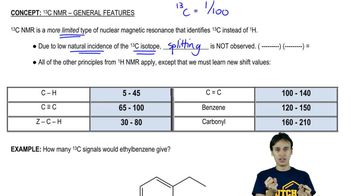Describe the proton-coupled 13C NMR spectra for compound 5 in Problem 41, indicating the relative positions of the signals.
5.
 Verified step by step guidance
Verified step by step guidance Verified video answer for a similar problem:
Verified video answer for a similar problem:



 4:m
4:mMaster 13C NMR General Features with a bite sized video explanation from Johnny
Start learning